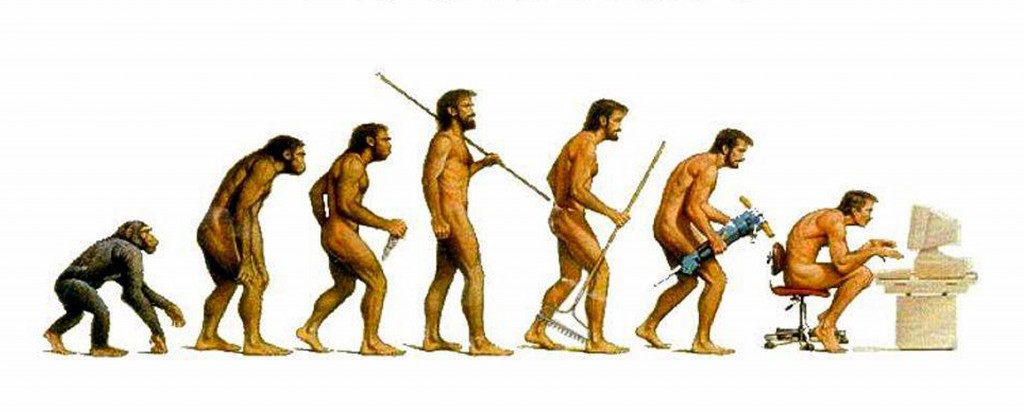We humans are trapped in bodies dating from the Stone Age. Living in a modern world, diseases linked to our civilization depict a major threat for the public health of the Western World. Back pain, diabetes, atherosclerosis, hypertension, allergies, obesity and even migraines stand in close relation to the fact that our bodies are not designed to walk in shoes on asphalt or to sit in an office for most of the day.
Arthur de Vany, whose followers have dubbed “superman’s slightly fitter granddad”, believes that mimicking the natural way of life of our ancestors, is what has kept him fit and healthy over the past 25 years. In order to slow-down the ageing process, he integrated intermittent fasting periods in his day and restricted his diet to a selection of foods with low carbohydrate levels including vegetables, lean meat, seafood and nuts. He exercises twice a week only, for barely an hour, and believes that short but intense exercise is more effective than exposing the body to continuous stress as it is the case in jogging. The figures prove him right: at the age of 72 years, he has a surprisingly low body fat of 8% and his biological age is that of a man in his mid-thirties.
Professor Ganten, a German evolutionary biologist and physician, says that our body has not had enough time to adapt to the environmental and lifestyle changes we have experienced over the past centuries. For instance, why do we seem to be so badly adjusted to the food we consume nowadays? During our ancestors’ times, hunger and starvation formed part of the daily routine. Individuals who managed to convert a great deal of what they ate into body mass automatically appeared to have better survival chances over the ones who presented a poor feed conversion ratio. Better survival chances meant an increased likelihood to pass on genes to subsequent generations. Therefore, it is not surprising that most of us, as a result of this evolutionary process, are capable of converting food effectively into body mass. Hence, what proved advantageous in the Stone Age is what potentially makes us ill nowadays.
Another seemingly sensible evolutionary inheritance is the way our body deals with the intake of food. It is widely known that we should avoid salting our foods excessively. Nonetheless, we are not designed to restrict ourselves when it comes to the consumption of salt. Our ancestors who lived in the hot savanna constantly lost water and consequently salt whilst sweating. If salt was available, the brain rapidly signaled the consumer to take in more in order to restore the homeostasis of water and salt in the body. Despite the fact that eating excessive amounts of salt is a health risk, the rewarding system of the brain still functions in the same way as it did for our ancestors from the Savanna. Similarly, this concept applies to sweet foods; the more energy the food contains, the more our rewarding system reinforces us to take in more instead of preventing us from hyperglycemia and its associated symptoms.
Dr Daniel Lieberman, who lectures at the University of Harvard, literally stands for the concept of running barefoot. He claims that, similarly to our nutrition, our feet have not been able to adapt to shoes over the past centuries. In order to base his theory on evidences, he has collected enough data of different test persons to compare their foot strikes whilst running barefoot with the way their foot strike changes when wearing sports shoes. His data show that the foot first touches the ground with the heel when wearing shoes whereas the forefoot hits the ground first when running barefoot. Although our feet were designed to walk barefoot, we prefer wearing shoes most of the times. This dramatic change in the way we walk and run, stands in correlation to joint grievance, says Dr Lieberman. If the foot touches the floor first with the forefoot, the foot is able to absorb the shockwave whereas the heel is incapable of doing so and sends the force of collision right into the nearest located joints, the knees and the hips. He further claims that by wearing comfortable shoes, we prevent challenging our foot muscles which are needed to absorb the force generated when hitting the ground. With his study he aims to stress the importance of increasing the time walking barefoot to challenge our foot muscles and to prevent joint pain.
Likewise, we use modern technology to make our foods as easily ingestible as possible. Although the food is easier to eat, it neglects the fact that our jaws and teeth still depend on the process of chewing in order to stay strong. This results in degenerate jaws and teeth which require orthodontic care in a long term.
This list of examples is not exhaustive and many more can be found to illustrate how changes in lifestyle causally link to diseases which appear to become increasingly prevalent in the Western World. In order to prevent that medicine needs to correct the outcomes of using our body in a way it was not designed for; further research needs to be undertaken to understand how our ancestors used to live. Furthermore, an emphasis needs to be placed on preventive medicine in order to slow down the spread of diseases of civilization in the future.



Hi! Would you please tell me who the original author of the image you used is? I need to know if there is some kind of owner or copyrights holder.